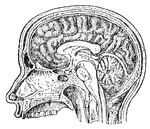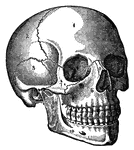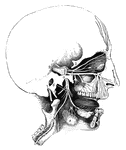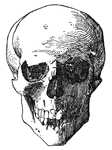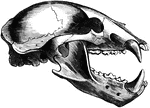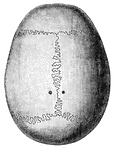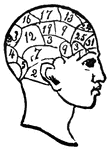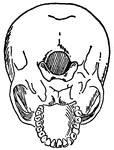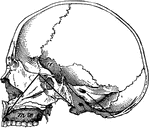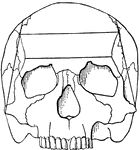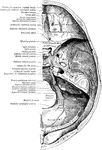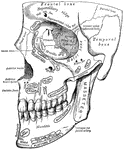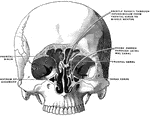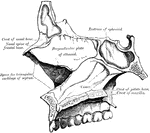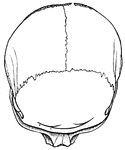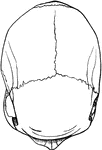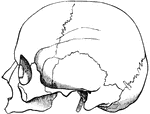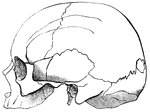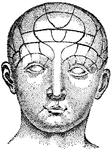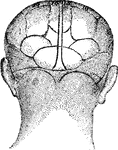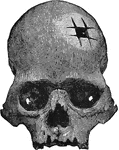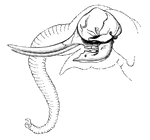
Elephant Skull
The skull of the Indian Elephant. (i) tusk-like upper incisors; (m) lower jaw, with grinding molars,…
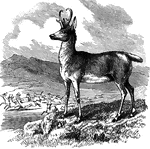
Prong-horn
"The only kind of antilope found on this continent. It differs from all the other members of the tribe…
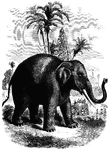
Asiatic Elephant
"This elephant differs from the African species, not only in size and in the characters of the teeth…
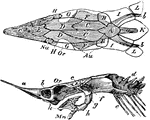
Sturgeon Skull
"Top and side views. The cartilaginous cranium shaded, is supposed to be seen through the unshded canial…

Acrodont
"Skull of lizard with Acrodont Dentition. One of those lizards which have the edge of the jaw, without…

Alligator Skull
"Skull of a member of the family Alligatoridæ, or some American member of the Crocodilidæ."-Whitney,…

Death's Head Moth
"The most remarkable species is the Death's Head Moth, Acherontia Atropos, a large kind,…

Death's Head Moth
"The Death's-head Moth is the European Acherontia Atropos, a hawk-moth with markings on the thorax resembling…

Death's Head Moth Caterpillar
"The Death's-head Moth is the European Acherontia Atropos, a hawk-moth with markings on the thorax resembling…
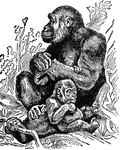
Female Gorilla
"The Gorilla is a celebrated anthropoid ape, generally belived to come nearer than any known one to…
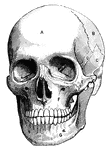
Human skull
"A, frontal bone; B, parietal bone; C, temporal bone; D, sphenoid bone; E, malar bone; F, upper jawbone;…
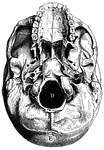
Base of skull
"A, Palate process of upper jawbone; B, zygoma, forming zygomatic arch; C, condyle, for forming articulation…
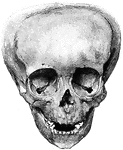
Deformed skull
"Showing how the Bones of the Skull may be artificially deformed by "head-binding." From the photograph…
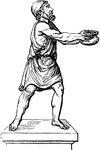
Pileus
"Any piece of felt; more especially, a skull-cap of felt, a hat. These seems no reason to doubt that…

Petasus
"The Petasus differed from the pileus or simple skull-cap in having a wide brim: the etymology of the…
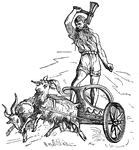
Thor
"Thor, the thunderer, Odin's eldest son, is the strongest of gods and men, and possesses three very…
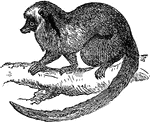
Lemur
A class of mammals allied to the monkey, and found mainly in Africa, southern Asia, and the Philippines.…

Walrus
An animal resembling the large seals, but it has dental affinities with the ungulates. Its skull is…
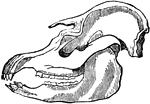
Tapir Skull
This illustration shows the skull of a tapir. Tapirs are large browsing animals, roughly pig-like in…

Platypus Skull
The platypus is a small, half-aquatic mammal endemic to the eastern part of Australia, and one of the…
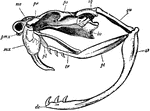
Rattlesnake Skull
This illustration shows the skull of a rattlesnake. ar, articular portion of lower jaw; de, dentary…
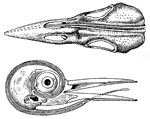
Woodpecker Tongue
This illustration shows the special development of tongues of woodpeckers; a, skull of flicker, showing…

Death's Head Moth
A moth with markings on the back of its thorax very closely resembling a skull. Usually measures 4 to…
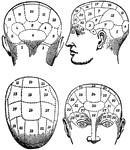
Phrenology
The term applied to the psychological theories of Gall and Spurzheim, founded upon 1, the discovery…
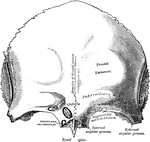
Frontal Bone
A bone in the human skull that consists of two portions, a vertical portion and a horizontal portion.…
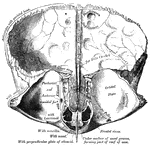
Frontal Bone
A bone in the human skull that consists of two portions, a vertical portion and a horizontal portion.…
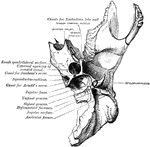
Temporal Bone
Bones situated at the sides and base of the skull. Each consists of five parts: the squama, the petrous,…

Sphenoid Bone
A bone situated at the base of the skull in front of the temporals and basilar part of the occipital.

Sphenoid Bone
A bone situated at the base of the skull in front of the temporals and basilar part of the occipital.
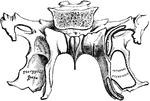
Sphenoid Bone
A bone situated at the base of the skull in front of the temporals and basilar part of the occipital.
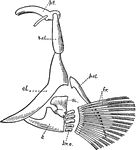
Teleost
"Pectoral girdle and fin of a Teleost. br.o., branchial ossicles; c, coracoid; cl., clavicle; f.r.,…
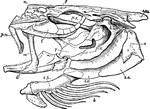
Cod Skull
"The skull of a cod. b, branchiostegal rays born on c.h., the ceratohyal bone; d, dentary portion of…
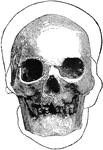
Hochelagan Skull
A front view of a Hochelagan skull, surrounded by the outline, on a larger scale, of the Cromagnon skull.
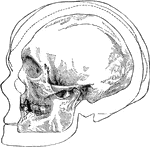
Skull
The outer outline is that of the skull found in the cave of Cromagnon, in France, belogning, as Dawson…

